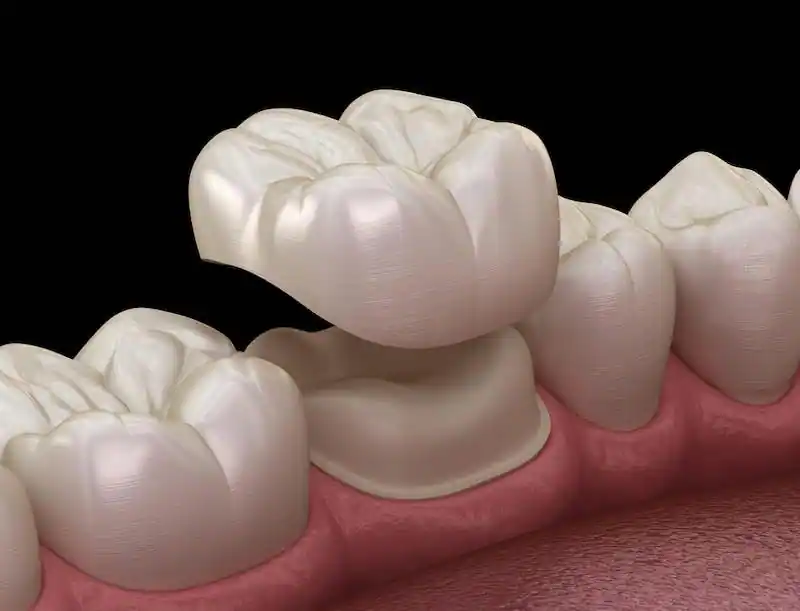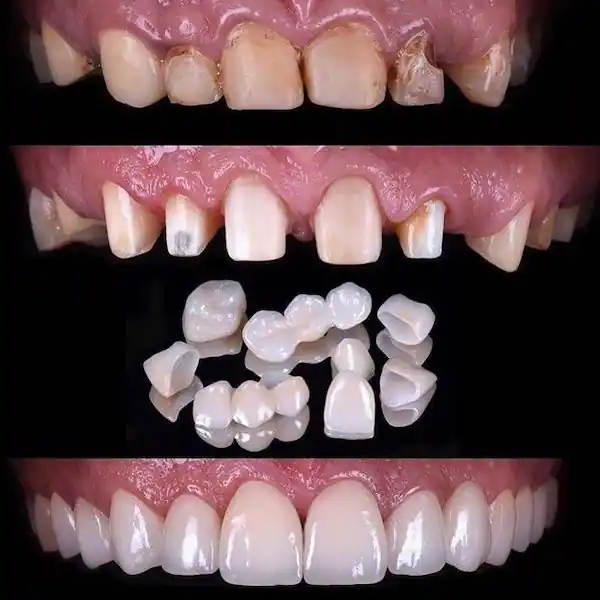A full mouth restoration, also known as full mouth reconstruction, is a dental procedure designed to restore the function, aesthetics, and health of the entire mouth.
While it is commonly associated with extensive tooth damage or tooth loss, full mouth restoration can also be performed on individuals with good teeth who seek to improve their smile and overall oral health.
This article aims to provide a comprehensive guide to full mouth restoration with crowns for those individuals with good teeth who desire a complete dental makeover.
Understanding Full Mouth Restoration
Full mouth restoration involves a combination of dental treatments that aim to address multiple oral health concerns simultaneously. It is a highly personalized and comprehensive approach to achieve optimal oral function, comfort, and aesthetics.
The process typically involves the use of dental crowns, which are tooth-shaped caps placed over existing teeth to enhance their appearance, strength, and alignment.
Assessment and Treatment Planning
Before commencing a full mouth restoration, a thorough examination is conducted by a skilled dentist or prosthodontist.
This assessment includes a review of the patient’s oral health history, a comprehensive dental examination, X-rays, and potentially advanced imaging techniques like digital scans or cone beam computed tomography (CBCT).
The dentist will evaluate the condition of the teeth, gums, jaw joints, and bite alignment to develop an individualized treatment plan.
The Role of Dental Crowns
Dental crowns play a vital role in full mouth restoration for individuals with good teeth. They are custom-made restorations designed to completely cover the visible portion of a tooth, providing both functional and aesthetic improvements.
Dental crowns can address various concerns, including tooth decay, structural damage, misalignment, discoloration, and wear. They are typically fabricated from materials such as porcelain, ceramic, or zirconia, which offer durability and natural-looking results.
Let’s explore the various aspects of dental crowns in the context of full mouth restoration:
a. Strength and Protection
Dental crowns are primarily used to strengthen and protect damaged or weakened teeth. Even if your natural teeth are in relatively good condition, they may have minor cracks, chips, or wear. Placing crowns over these teeth helps reinforce their structure, preventing further damage and potential tooth loss. By acting as a protective barrier, crowns can enhance the longevity of your natural teeth.
b. Restoration of Tooth Shape and Function
Dental crowns are customized to mimic the shape, size, and contour of your natural teeth. They are carefully crafted to ensure a seamless blend with your existing dentition, creating a harmonious and aesthetically pleasing smile. Crowns restore the functionality of damaged teeth, allowing you to bite, chew, and speak with ease.
c. Aesthetic Enhancement
In addition to their functional benefits, dental crowns contribute significantly to the aesthetic improvement of your smile. They can address tooth discoloration, irregularities, and misalignment, providing a uniform and radiant appearance. Dental crowns can be color-matched to your surrounding teeth, ensuring a natural blend that is virtually indistinguishable from your natural dentition.
d. Material Options
Dental crowns are available in a variety of materials, each with its unique advantages:
i. Porcelain or Ceramic Crowns
These crowns offer excellent aesthetics, as they can closely resemble the natural color and translucency of teeth. They are an ideal choice for front teeth or highly visible areas.
ii. Porcelain-Fused-to-Metal (PFM) Crowns
PFM crowns combine the strength of a metal substructure with a porcelain outer layer. They provide durability and natural-looking results. However, in some cases, the metal substructure may cause a slight grayish hue at the gumline.
iii. Zirconia Crowns
Zirconia crowns are known for their exceptional strength and durability. They are highly resistant to chipping and cracking, making them suitable for posterior teeth that require more chewing force.
e. Customization and Precision
Dental crowns in full mouth restoration are meticulously customized to meet your specific needs and desired outcome. Modern dental technology, such as digital impressions and computer-aided design and manufacturing (CAD/CAM), enables dentists to create precise, well-fitting crowns.
The dentist will consider factors such as bite alignment, occlusion, and aesthetics when designing and fabricating the crowns to ensure optimal function and appearance.
f. Longevity and Maintenance
With proper care and maintenance, dental crowns can last for many years. It is essential to follow good oral hygiene practices, including regular brushing, flossing, and rinsing with an antibacterial mouthwash. Additionally, it is recommended to visit your dentist for routine check-ups and professional cleanings to detect any potential issues early on.
The Procedure
The process of full mouth restoration with crowns typically involves the following steps:
a. Tooth Preparation
To accommodate the dental crowns, a minimal amount of enamel is removed from the tooth surface. This step ensures a precise fit for the crowns and allows for a seamless integration with adjacent teeth.
b. Impression Taking
After tooth preparation, impressions of the teeth are taken to create precise molds. These impressions serve as a blueprint for the fabrication of the custom crowns, ensuring a proper fit and alignment.
c. Temporary Crowns
While the permanent crowns are being fabricated, temporary crowns are placed over the prepared teeth to protect them and maintain aesthetics and function.
d. Crown Placement
Once the custom crowns are ready, the temporary crowns are removed, and the permanent crowns are cemented onto the prepared teeth. The dentist ensures proper fit, alignment, and color matching to achieve a natural-looking smile.
Additional Dental Procedures
Depending on individual needs, full mouth restoration with crowns may be combined with other dental procedures to achieve optimal results. Some common complementary treatments include:
a. Dental Implants
If tooth loss is present, dental implants may be recommended to replace missing teeth. Implants provide stability and support for the crowns, enhancing functionality and aesthetics.
b. Periodontal Treatment
In cases where gum disease is present, periodontal therapy may be required to treat and stabilize the gums before initiating the restoration process.
c. Orthodontics
Orthodontic treatment, such as braces or clear aligners, may be incorporated to correct misalignment or malocclusion, ensuring proper bite alignment and enhancing the longevity of the restoration.
d. Teeth Whitening
For individuals seeking a brighter smile, teeth whitening procedures can be performed before crown placement to achieve consistent color throughout the mouth.
Maintenance and Aftercare
After full mouth restoration with crowns, maintaining good oral hygiene practices is crucial for long-term success. Regular dental visits, professional cleanings, and proper oral care at home are essential to ensure the health and longevity of the restorations.
Avoiding habits such as smoking, teeth grinding, and chewing on hard objects can also contribute to the durability of the crowns.
Conclusion
Full mouth restoration with crowns is a comprehensive dental procedure that can transform the smiles of individuals with good teeth, enhancing both their oral health and aesthetics.
By addressing various concerns and combining different dental treatments, individuals can achieve a functional, comfortable, and natural-looking smile.
If you are considering a full mouth restoration, consult with a qualified dental professional to determine the most suitable treatment plan based on your specific needs and goals.





